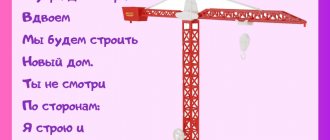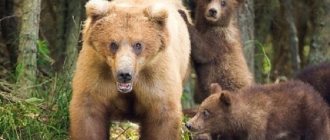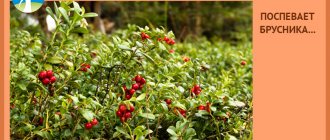Task 1. Formation of a general concept of “food”.
The speech therapist talks with the child about what foods are (Foods are what a person eats).
Invites him to color only the food and name the extra items (knife, spoon).
The child answers the question why painted objects are called products (milk, meat are products because food is prepared from them).
- What does the hostess have? Color only food items. Name the objects according to the example. What items are extra?
— Why are these items called products?
Nutrition for children with speech disorders
4. The builders are choline and lecithin. Eggs, liver, fish and milk are rich in these substances. By the way, if the child is hyperexcitable, and this interferes with his speech development, or his nervous system is too labile, and you observe the appearance of convulsive stuttering. It will be beneficial to drink warm milk before bed for 2-3 weeks. This procedure will have a greater effect in combination with a relaxing massage and a bath before bed.
5. One of the most important vitamins for the central nervous system are B vitamins.
It is recently fashionable to prescribe them to children with delayed speech development in tablet form (for example, Neuromultivit), however, taking into account the high likelihood of allergic recommendations, you can start by actively including products containing them in the child’s diet.
To get vitamin B1, drink bread kvass with the whole family. Let me emphasize, this is not a drink bought in a store or made from kvass wort, but one made by you using bread crumbs. Quite a lot of vitamin B1 is contained in buckwheat and oatmeal.
Again, for good sleep and mood, you need plenty of vitamin B3.
The biological role of vitamin B6 is the synthesis of neurotransmitters, improving the condition of liver cells and nerve fibers.
Children with dysarthria need to take this vitamin to improve tissue trophism (which will increase the effectiveness of speech therapy massage). Its content in spinach is quite high, from which you can make delicious pancakes: boil the spinach and grind it into a puree, add milk, wholemeal flour, fructose, sea salt and egg. Fry quickly. By adding wheat sprouts to your usual salads, you can also increase your intake of this important vitamin.
Vitamin B 12 is one of the main ones for the prevention and correction of delayed speech development, alalia, because participates in the synthesis of myelin (its deficiency is one of the important causes of these disorders). The vitamin is poorly absorbed when taken orally; simultaneous intake of folic acid improves absorption.
For absorption, it is necessary to consume citrus fruits, peppers and other foods rich in vitamin C. Main food sources of vitamin B12: fermented milk products, eggs, soybeans, yeast, brewer's yeast, green parts of plants (turnip tops, radishes, carrots), salads, green onions , beef liver.
And finally, it is important to follow a diet (eat at the same time), which forms the rhythm of the nervous system - prevention of stuttering, and also do not forget to familiarize the child with the names of products and verbalize smells (spicy, rotten, etc.). etc.), taste (spicy, sweet and sour), cooking actions (rub, squeeze, etc.).
Task 2. Food production.
a) The speech therapist tells the child that people of different professions need to work hard before food gets to the table.
He sequentially disassembles each piece of bread and explains to the child the process of bread production (The tractor plowed the field. The field was sown with wheat seeds, etc.). At the same time, professions are mentioned: grain grower, tractor driver, combine operator, baker, etc.
— How did bread appear? Tell me from the pictures.
In conclusion, the speech therapist explains to the child that bread must be protected.
b) The speech therapist explains to the child what can be prepared from wheat.
— What food products are made from wheat flour? Tell me from the pictures.
— What else is made from wheat?
The child, looking at the pictures, makes sentences according to the model (White bread, cake, pies, pretzels are made from wheat).
LEXICAL TOPIC “TABLEWARE. FOOD"
Speech games.
"ONE IS MANY"
Objectives: practice the formation of plural nouns in the nominative and genitive cases.
For example: One plate - many plates, one teapot - many teapots, one bucket - many buckets, etc.; plate - plates, knife - knives, bucket - buckets.
"BIG SMALL"
Objectives: continue to learn how to form nouns using diminutive suffixes.
For example: plate - plate, saucer - saucer, teapot - teapot, etc.
"DIFFICULT WORDS"
Objectives: practice forming complex words by merging two stems
For example: cooks juice - juice cooker, chops meat - meat grinder, crushes garlic - garlic press
“WHAT SHOULD I PLACE WHERE?”
Tasks: forming nouns from nouns
For example: sugar - sugar bowl, salt - salt shaker, bread - bread box, butter - butter dish, etc.
Salt is added to puree, and sugar is added to tea. (Which foods do they put salt in and which do they put sugar in?)
There is kefir in the glass, and coffee in the cup. (Which drink is in which container)
"TELL WHICH"
Objectives: practice forming relative adjectives from nouns.
For example: a bucket made of iron - iron, a set of porcelain - porcelain, a glass made of glass - glass, a knife made of steel - steel, a fork made of plastic - plastic, a teapot made of clay - clay, etc.
"NAME WHAT"
Tasks: forming adjectives from verbs
For example: stew - stewed meat, oven - baked pies, etc.
"SAY THE OPPOSITE"
Objectives: practice selecting antonyms
For example: the frying pan is heavy and the cup is light, the pan is wide and the mug is narrow, the bowl is deep and the plate is shallow, etc.
“NAME ELSE”
Tasks: selecting verbs to nouns
For example: Dishes are bought, washed, put away, placed on the table, wiped, beaten, eaten from, cooked in, etc.
"NAME IT CORRECTLY"
Tasks: using present and past tense verbs in speech
For example: wipes - wiped, cleans - cleaned
"INSKILLED COOK"
Tasks: formation of prefixed verbs.
For example: cook - undercook - overcook, fry - undercook - overcook, etc. “WHERE, WHERE, WHERE?”
Tasks: practice using the prepositions NA, B, IZ, S(SO).
For example: - Where are the dishes? - on the table, in the closet, on the shelf, where did you get it from? – from a shelf, from a table, from a closet, etc.
"FUNNY SCORE"
Objectives: learn to coordinate the numerals 1, 2,……10 with nouns
For example: one frying pan, fifth pie, etc.
"WHO AND WHAT"
Objectives: expanding ideas about the polysemy of words
For example: a handle on a pot, on a door, on a child; the bottom of a pan, a river, a box; walls near the kettle, near the box, in the room, etc.
"RELATED WORDS"
Objectives: practice selecting related words.
For example: bread - breadbox, breadgrower, salt - salt shaker, salty, salt, etc. etc.
LEXICAL TOPIC “FURNITURE. ELECTRICAL APPLIANCES»
SPEECH GAMES
"ONE IS MANY"
Objectives: practice the formation of plural nouns in the nominative and genitive cases.
For example: table - tables, chair - chairs, bed - beds, TV - TVs, many chairs, beds, wardrobes, irons, etc.
"BIG SMALL"
Objectives: continue to learn how to form nouns using diminutive suffixes.
For example: chair - stool, table - table, cabinet - cabinet, etc.
"DIFFICULT WORDS"
Objectives: practice forming complex words by merging two stems
For example: juice cooks - juice cooker, meat chops - meat grinder, cooks soon - pressure cooker, etc.
"TELL WHICH"
Objectives: practice forming relative adjectives from nouns.
For example: wooden table, plastic stool, leather sofa, etc.
"NAME WHAT"
Objectives: agreement of nouns with adjectives, learning to select adjectives for a given noun
For example: it can be wide and narrow, a wooden one can be a shelf, it can be tall, a large one can be a closet...
"SAY THE OPPOSITE"
Objectives: practice composing complex sentences with the conjunction a, following the example:. Mastering antonym words.
For example: Large chair - ...High table - ...Wide bed - ...Easy chair - ...Thin leg - ...Long shelf - ... .
“SAY IT DIFFERENTLY”
Objectives: learn to select verbs for a given noun. Select actions for the subject.
For example: they sit at the table, write, have lunch, play, etc.
“WHAT’S DIFFERENT?”
Objectives: learn to distinguish words that are similar in meaning
For example: washes - washes, collects - puts away, sews - knits, sits - sits down, etc.
"WHAT IS HE DOING?"
Tasks: Formation of prefixed verbs.
For example: sitting - will sit down, lying - will lie down, etc.
“WHERE, WHERE, WHERE?”
Tasks: practice using the prepositions NA, IN, FROM, S(SO), POD, FOR, U, etc.
For example: clothes in the closet, a ball under the table, a chandelier above the table, near the table, etc.
"FUNNY SCORE"
Objectives: learn to coordinate numerals with nouns
For example: two cabinets, a fifth table, etc.
"DIFFERENTIATE"
Objectives: learn to distinguish ambiguous words
For example: a leg by a table, a chair, a mushroom, by a person, a pen by a person, by a door, by a drawer, they write to it
"RELATED WORDS"
Objectives: practice selecting related words.
For example: table - dining room
Task 3. Types of products.
Game "Grocery Store".
a) The speech therapist explains to the child that there are different types of products depending on what they are made from: fish, meat, dairy, vegetable, etc.
-What is made from milk? (Butter is made from milk). What does chicken give? Tell me from the pictures.
The child looks at the pictures and names the type of product based on the model (Butter, milk, cheese, cottage cheese are dairy products, since they are made from milk).
- Name meat, fish, dairy, plant foods.
— What bakery and confectionery products do you know?
You can take an introductory tour to a grocery store.
b) The speech therapist invites the child, as if punching a check at the cash register, to name the product and the department in which this product is sold (Please give me a loaf of white bread from the bread department).
lexical topic Food
Topic: “Food”
Goals:
expand children's understanding of food and their importance for human health;
learn to form nouns with diminutive suffixes in singular. and many more number;
practical mastery of the category of the instrumental case;
teach preschoolers to construct grammatically correct sentences of 4-5 words; develop the ability to ask questions independently, participate in dialogue, observing the rules of speech etiquette;
develop visual perception, voluntary attention, logical thinking.
Equipment:
pictures depicting food products (soup, cabbage soup, porridge, cutlets, tea, coffee, butter, milk, cheese, sour cream, cottage cheese, bread, cookies, sausage, sausages, cake, waffles, pastries, candies), a picture depicting a cook and baker, panel, pointer, ball.
Progress of the lesson
1.Organizing moment
Will the one who can name what we eat sit down? (Bread, sausages, butter, sausage, etc.)
2. Setting a learning goal
D/i “Show and name”
Show and name the object.
Name all these items in one word? (Food).
Today we will talk about food.
3. “Question and answer”
What is the profession of a person who prepares food? (Cook, baker)
What can a chef cook? (Shchi, porridge, cutlets, soup)
What can a baker bake? (Bread, cakes, cookies, waffles, cake).
Who cooks at home? (Mom, grandma, dad...)
4. Introduction to types of food products
(dairy, meat and bakery products)
What are bread, loaves, bagels... made from? (Pasta, pies, cookies, etc.)
Products made from flour are called flour foods.
Guess the riddle: “Liquid, not water, white, not snow” (Milk)
Let's name milk products (cottage cheese, sour cream, butter, kefir are made from milk).
Products made from milk are called dairy products.
What are sausages, sausages and cutlets made from? (From meat)
Meat products are called meat products.
5.Finger gymnastics
a) Slapping the rhythm with your palms on the table.
b) Alternating hand position: fist-palm-edge.
c) Reproduce different hand positions: ring-chain-pinch.
6
.
D/i “Call me kindly”
(with a ball)
Porridge, cutlet, sausage, waffle, candy, milk, bread.
7. Dynamic pause
A game with speech accompaniment “Masha and the Bear” is played.
Children
(
walk in a circle on the outside of the foot, imitating the gait of a bear).
I’ll sit on a tree stump and eat a pie.
Mashenka
(threatening with her finger).
I sit high and look far away. Don't sit on the tree stump, don't eat the pie. Bring it to grandma, bring it to grandpa.
The game is repeated 2-3 times. The role of Mashenka is played by different children.
8. D/i “Tell me which one, which one, which one, which one?”





